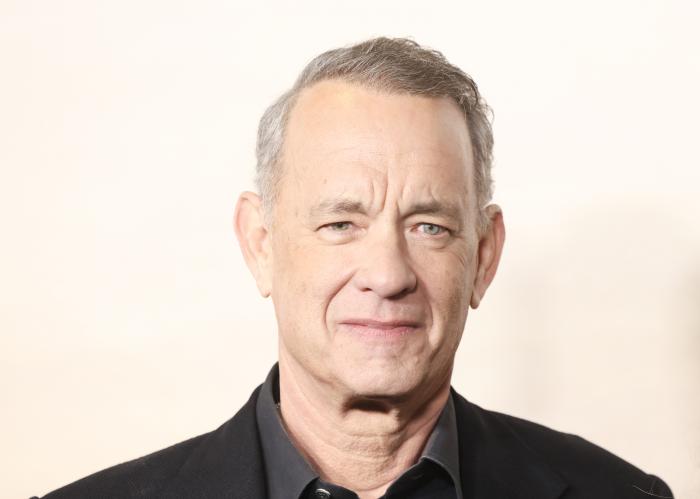

Mindhole Blowers: 20 Facts About Hanna That Might Just Miss Your Heart
By Cindy Davis | Lists | September 19, 2011 |
By Cindy Davis | Lists | September 19, 2011 |
Watching Hanna a second time (with director Joe Wright’s [Pride and Prejudice, Atonement] commentary) it struck me how much I loved the film. The 21st century parable/fairy tale pays homage to the director’s childhood, The Brothers Grimm and even Blue Velvet. Wright spoke in depth of the responsibilities and anguishes of parenthood and has deftly related the challenges every parent faces to the unique circumstances Hanna illustrates. We are reminded that even as we struggle to face the inevitable letting go, our children are preparing to reverse roles and look after us.
The opening shot was filmed in Finland (where temperatures reached -29 degrees during shooting) inspired by a YouTube video of a cat, shown to Joe Wright by his girlfriend.

The entirely electronic score was composed by British duo, The Chemical Brothers, who also worked on the Black Swan score. Wright had his sound effects crew work closely with TCB so there would be no distinction between sound effects and music.
The cabin that served as home to Erik and Hanna was based on Scandinavian and Ukrainian styles, built with locally sourced wood—without a single nail—and wooden pegs.
Fight choreographer, Jeff Imada, created the fighting style according to the characters; Erik fought from weight and strength and Hanna from speed and balance. Imada has also coordinated fighting for Iron Man 2, The Green Hornet, Fight Club, and The Bourne Ultimatum, among others.
Wright created the teeth brushing scene as a joke about the U.S. obsession with teeth. As a Brit with bad teeth, he feels “slightly resentful” of Americans’ perfect choppers.
In a scene by the fireplace after Hanna has set off the tracker, the director had two kippers hanging in the fireplace, referring to the English saying, “done up like a couple of kippers.” At that moment, Erik and Hanna are each realizing they are caught, both literally and figuratively.
The haircut Hanna gives her father reminded Joe Wright of the hairstyles of 80s band, A Flock of Seagulls.
The character of Marissa is based on fairy tale witches and one of Wright’s elementary school teachers, Priscilla. He thought of her as both sexy and scary and had an odd memory of girls gathering around the teacher at story-time, stroking her leg as she read to them.
Producer Leslie Holleran told the director that Erik should have been wearing a fur coat—not just a suit—when he left (in the snow and sub-zero temperatures). Wright apologized for not listening to her and agreed it was unbelievable as it was on film.
Wright describes the scene with Marissa (Cate Blanchett) speaking to Hanna through her doppelganger (Michelle Dockery) as a shout out to Ingmar Bergman’s Persona; the two women almost seem to become one.
The wind tunnels through which Hanna escapes are a real location in Berlin, created pre-WWI to test aircraft.
Shooting in the Moroccan desert, temperatures reached 140 degrees. Wright preferred the cold of Finland.
The director said he liked that Marissa kept her secrets behind her shoes—that he knows women like that. And he chose the shoes she wore because they looked “witchy.”
The character of Sophie (Jessica Barden) is this fairy tale’s spritely nymph who magically appears out of nowhere when first she meets Hanna. She later pops up from under the water in the pool; Wright wanted her to be a little bit magical and at the same time, a representation of a young woman who buys into today’s “ridiculously absurd celebrity culture.” The actress actually suffered from a fungal nail infection and kept talking about it, thus it was incorporated into the film.
Speaking about the difficulty of working with camels, Wright mentioned that Director of Photography, Alwin H. Küchler, was kicked in the cojones by one of the camels. Major injury was likely prevented by a mobile phone in his pocket.

Saoirse Ronan learned Arabic phonetically and by the director’s account, spoke it flawlessly.
In the scene where technology overwhelms Hanna, hidden men wiggled the electric teapot and telephone with string.
The strip club called “Safari” is a real place in Berlin and the woman on stage performing a Snow White act actually worked there.
Joe Wright’s mother painted the fish mural behind the boys playing Foosball and she made the mostly unseen wolf dressed as grandmother that sat in the bed at Mr. Grimm’s place. The abandoned amusement park was a real location (Spreepark Berlin) found by the director’s sister and fortuitously included the wolf’s mouth cave, out of which Marissa stepped to face Hanna.

Erik’s underground fight scene was done with a single Steadicam on the 6th and last take, as they had run out of time (last day in country). Joe Wright said he wasn’t sure the distressed look on Eric Bana’s face was acting.

Sebastian singing into the flashlight was in homage to Ben in Blue Velvet.
Martin Wuttke, the German actor who plays Mr. Grimm, portrayed Hitler in Inglourious Basterds
Because of the scene with Erik seemingly running faster than Marissa’s car, Eric Bana made up an advertising slogan: “The New Range Rover, only slightly slower than Eric Bana.” Joe Wright wanted certain things to be fantastical and magical, rather than plausible. Both Hanna and Erik were meant to seem supernatural, able to move slightly faster than the eye.

Cindy Davis is training until she catches Eric Bana.
← Jon Stewart May Be a Giant Dick, But President Obama is the One with the Nice Ass | The Best And Worst Things In Movie History: A Seriously Random List →
More Like This
The 11 Best LGBTQ+ Movies of 2023
The Best Streaming Horror Movies for Young Adults
The Great Rainbow-Washing Round-Up
Last Minute Video Game Gift Ideas That Aren't 'Hogwarts Legacy'
13 Celebs You Might Genuinely Be Surprised to Learn are Newly Eligible for AARP Memberships

Tom Hanks Is Not Trying To Sell You Drugs
Three Trailers: What Happened Before Rosemary's Baby, and Zoe Saldaña In Her Own Skin
Jack White Threatens 'Fascists' In Donald Trump's Campaign With A Lawsuit
Taylor Swift Has a Brittany Mahomes Problem
'The Acolyte's Amandla Stenberg Got Thrown to the Wolves
Christina Aguilera Thinks It’s ‘Corny’ When Celebrities ‘Do Things Intentionally’ to Stay Relevant
Pajiba Love

Taylor Swift Has a Brittany Mahomes Problem
Reviews